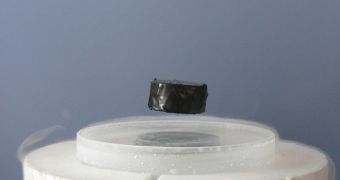A team of physicists at the Princeton University announces the discovery of an amazing new material, which features a “double personality.” It is part superconductor, and part metal, and researchers say that this discovery may significantly benefit the electronics industry.
The Princeton experts say that future electronic devices constructed with the new material could revolutionize the way information is stored and processed inside computers, laptops, cell phones, portable memories and so on.
This new material is, in essence, a crystal called a topological superconductor, and its main feature is that it boasts two electronic states at the same time. The behavior sets in when the stuff is cooled down to very low temperatures.
Under these conditions, the material becomes a superconductor on the inside, but retains a metallic surface that is able to conduct electricity with some resistance. This type of feature has never been demonstrated practically before.
Generally, metals, insulators and conventional superconductors tend to have a single type of behavior as far as electricity goes. They can either conduct current or not, and remain consistent in they way they respond to electrical charges.
“The known states of electronic matter are insulators, metals, magnets, semiconductors and superconductors, and each of them has brought us new technology,” explains M. Zahid Hasan.
“Topological superconductors are superconducting everywhere but on the surface, where they are metallic; this leads to many possibilities for applications,” adds the expert.
Hasan holds an appointment as an associate professor of physics at the Princeton University, and is also the leader of the research efforts, Science Blog reports.
Details of the new investigation appear in the November 1 issue of the esteemed scientific journal Nature Physics. The most important conclusion of the research is that the new material has applications for quantum computing.
In these new computers, the topological superconductors would be able to identify calculation errors as they occur, and then disregard them as further processing takes place.
“These highly unusual superconductors are the most ideal nurseries to create and manipulate Majorana fermions, which could be used to do quantum computing in a fault-resistant way,” adds L. Andrew Wray PhD, who was the first author of the Nature paper.
“And because the particles would exist on a superconductor, it could be possible to manipulate them in low power-consumption devices that are not only ‘green,’ but also immune to the overheating problems that befall current silicon-based electronics,” he adds.
Funding for the new research came from the US Department of Energy (DOE), a National Science Foundation (NSF) American Competitiveness and Innovation Fellowship and the Alfred P. Sloan Foundation.

 14 DAY TRIAL //
14 DAY TRIAL //